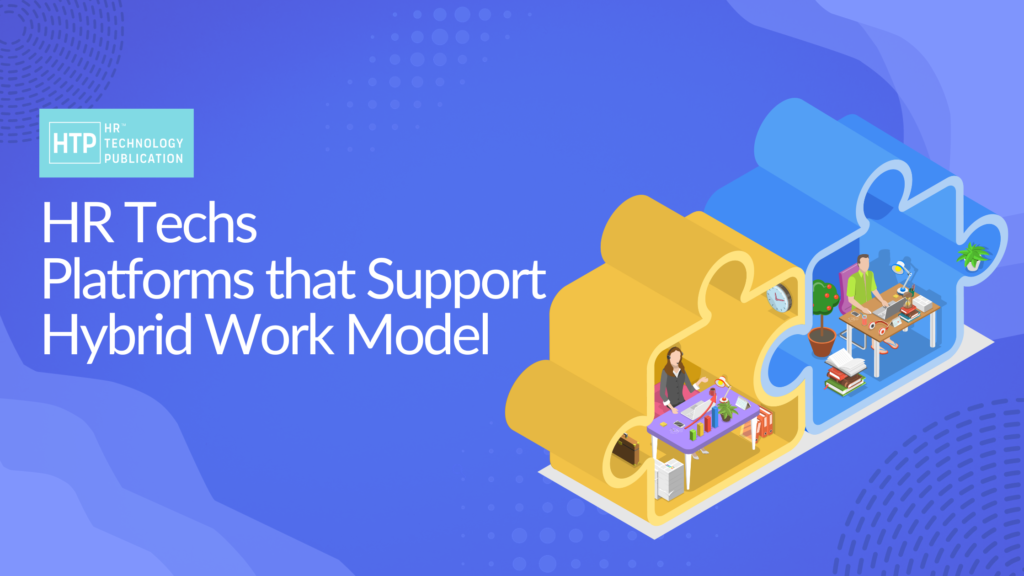As businesses navigate the evolution of work dynamics, the hybrid work model has emerged as a frontrunner, blending remote and in-office work seamlessly. Human Resource technologies have played a pivotal role in facilitating this transition, offering solutions that streamline operations, foster collaboration, and enhance employee experience. Here are nine cutting-edge HR tech solutions empowering the success of the hybrid work model:
1. Collaboration Platforms for Seamless Communication
Communication lies at the heart of successful hybrid work models, and robust collaboration platforms form the backbone of this connectivity.
What you should look for:
- Unified communication tools for messaging, video conferencing, and file sharing.
- Seamless connectivity across various devices and locations.
- Real-time collaboration tools foster teamwork despite geographical barriers.
In a hybrid work model setup, employees need tools that facilitate effortless communication and collaboration. Unified platforms offering messaging, video conferencing, and file sharing streamline interactions, ensuring teams stay connected regardless of their physical locations. These platforms integrate smoothly across devices, allowing seamless communication and collaboration, enabling real-time collaboration and teamwork despite geographical barriers.
2. Cloud-Based HR Management Systems
Centralizing HR functions through cloud-based systems empowers both remote and in-office teams to access essential HR resources.
What you should look for:
- Centralized systems allow remote access to HR databases.
- Secure storage for employee data accessible from anywhere.
- Scalable solutions adapting to evolving workforce needs.
Cloud-based HR management systems enable remote access to vital HR databases and resources. They provide secure and scalable solutions, ensuring that employee data remains accessible from any location while adhering to stringent security protocols. The adaptability of these systems to accommodate the changing needs of a hybrid work model makes them indispensable in managing HR functions effectively.
3. Virtual Onboarding and Training Tools
Efficient onboarding and continuous training are critical for integrating remote employees and fostering their professional development.
What you should look for:
- Interactive onboarding platforms for seamless remote employee integration.
- E-learning modules cater to diverse learning styles.
- Gamification enhancing engagement and knowledge retention.
Virtual onboarding tools facilitate the seamless integration of remote employees into the company culture. Interactive platforms provide engaging onboarding experiences, while e-learning modules cater to different learning styles, ensuring effective training. Incorporating gamification elements boosts engagement and facilitates better knowledge retention, contributing to the ongoing development of remote teams.
4. Employee Engagement and Feedback Platforms
Continuous feedback and engagement platforms play a vital role in maintaining a connected and motivated workforce.
What you should look for:
- Surveys and pulse-check tools for gauging employee sentiments.
- Continuous feedback mechanisms promote a culture of improvement.
- Recognition platforms boost morale and reinforce achievements.
Platforms for gathering employee feedback and engagement play a pivotal role in understanding employee sentiments. Tools like surveys and pulse checks provide insights into employee satisfaction and areas of improvement. Continuous feedback mechanisms foster a culture of growth, while recognition platforms acknowledge and reinforce employee achievements, contributing to a positive work environment.
5. Performance Management Software
Effective performance management tools ensure alignment and clarity in goal-setting and evaluation processes.
What you should look for:
- Goal-setting and tracking tools aligning remote and in-office objectives.
- Real-time performance evaluations facilitate timely feedback.
- Data-driven insights aiding fair and objective assessments.
Performance management software helps align remote and in-office team objectives by providing clear goal-setting and tracking mechanisms. Real-time performance evaluations enable timely feedback, fostering continuous improvement. Utilizing data-driven insights ensures fair and objective assessments, promoting transparency and alignment within a hybrid work model.
Prioritizing employee well-being through dedicated wellness and mental health apps is crucial in supporting remote workers.
6. Wellness and Mental Health Apps
What you should look for:
- Wellness platforms.
- Stress management tools.
- Employee assistance programs to ensure comprehensive support.
Wellness and mental health apps provide essential resources for employees to maintain physical and mental well-being. These platforms offer stress management tools, mindfulness apps, and employee assistance programs, ensuring comprehensive support for remote workers, and promoting a healthy work-life balance



